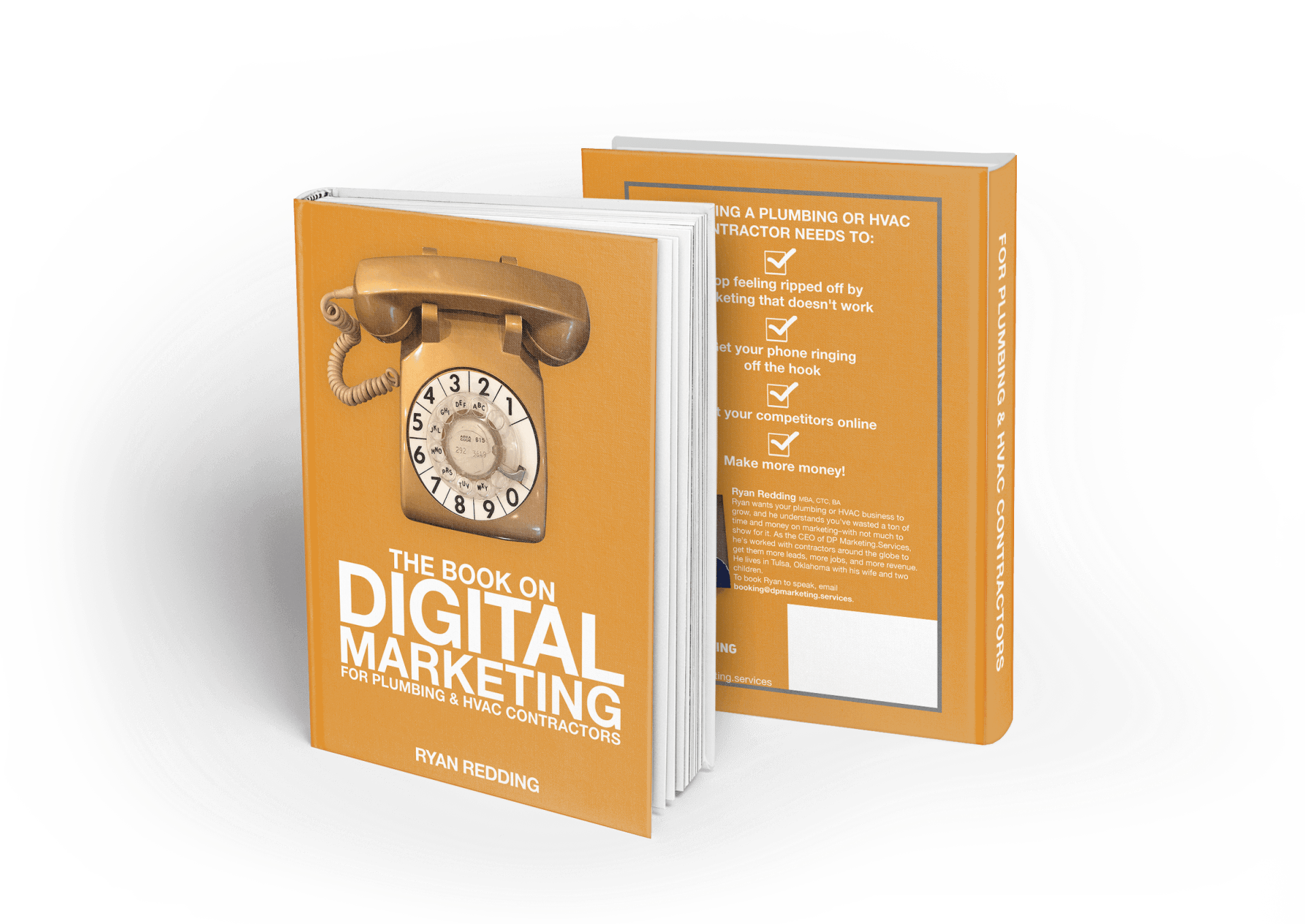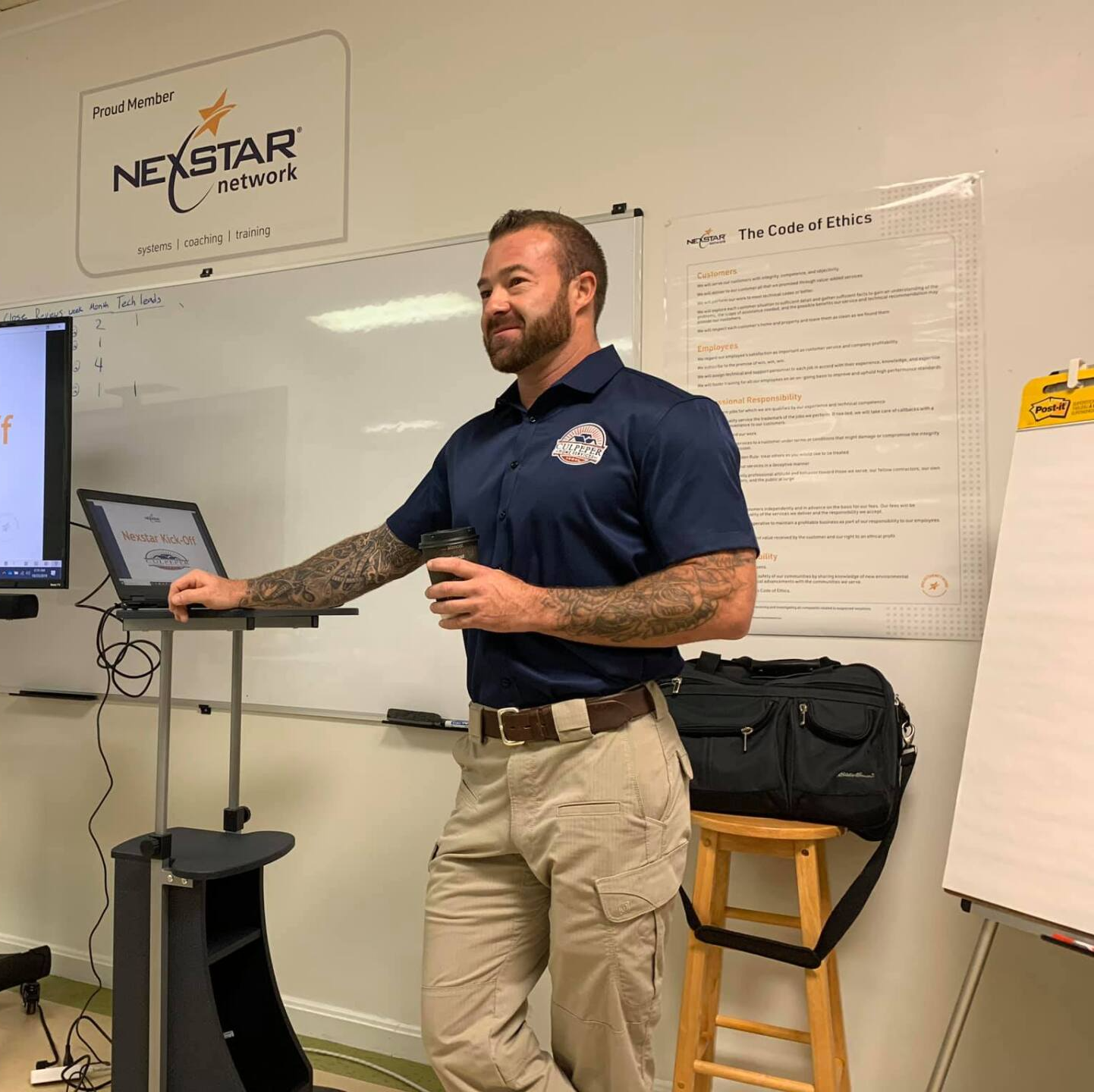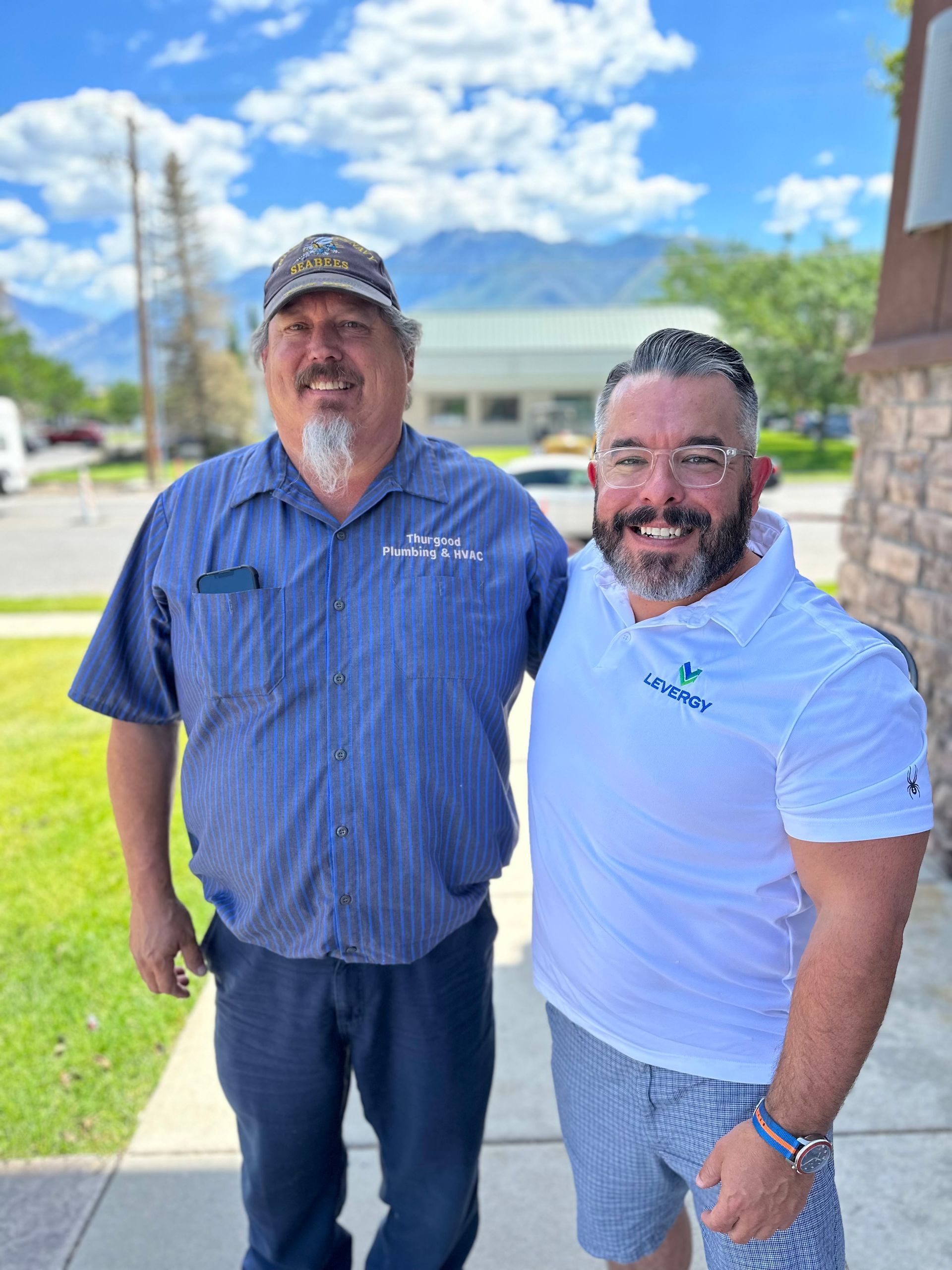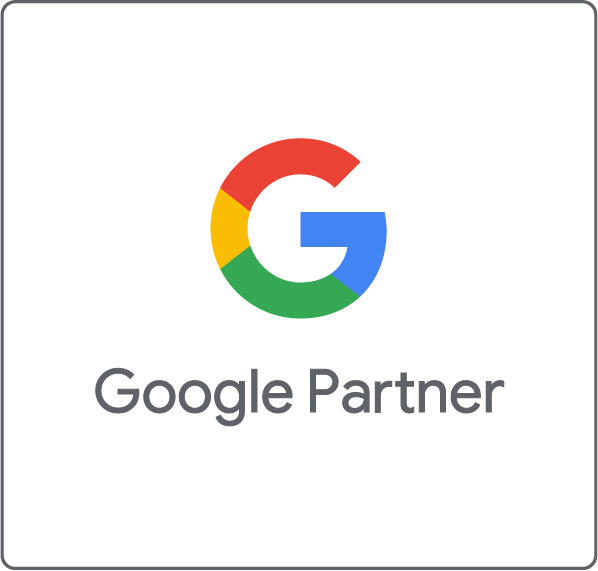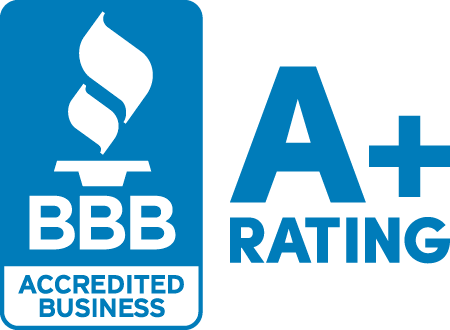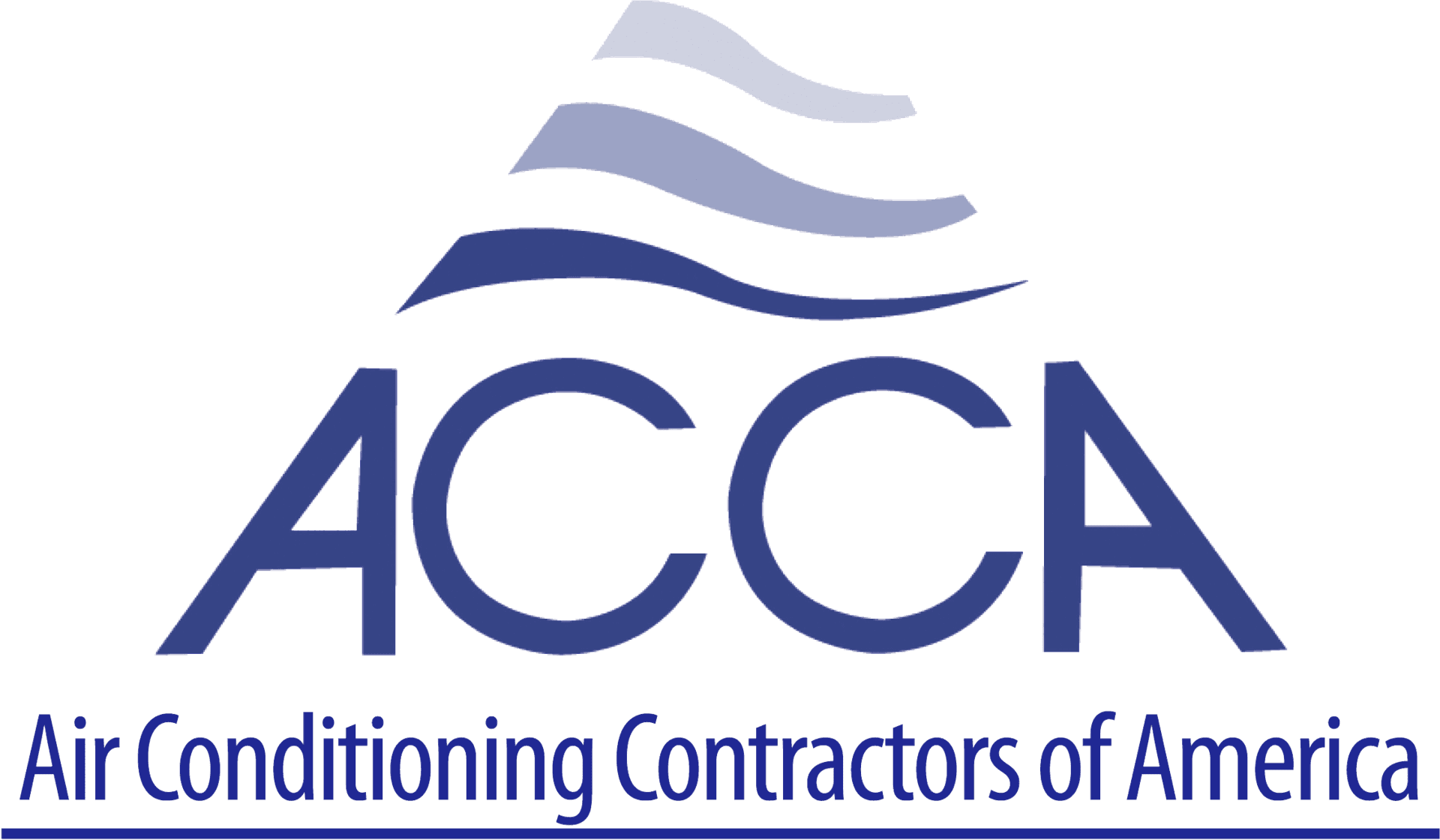How To Create People-First Content To Improve SEO
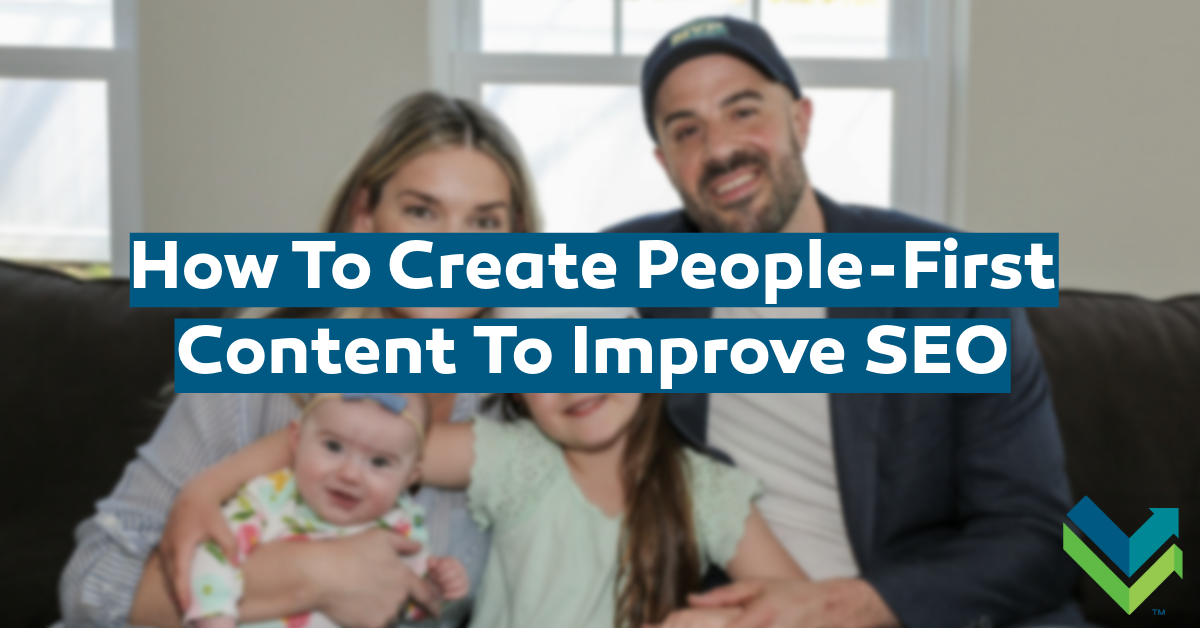
How To Create People-First Content To Improve SEO
With Google's massive March 2024 core update, the shift towards creating people-first content has revolutionized how we engage with our audience and optimize for search engines. This comprehensive guide delves into crafting content that genuinely resonates with readers, ensuring it not only meets their needs but also adheres to the evolving algorithms of search engines like Google. Let's explore key strategies for aligning your content with your audience's expectations, infused with SEO best practices to enhance visibility and engagement.
Understanding People-First Content
Creating people-first content fundamentally means shifting the focus from traditional SEO tactics, which often prioritize keywords and search engine algorithms, to genuinely addressing the user's experience and needs. This strategy is about understanding and empathizing with your audience, crafting content that not only answers their queries but also provides deep insights and practical solutions to their challenges.
The Core of People-First Content
At its heart, people-first content aims to engage and inform. This involves creating articles, videos, and other types of content that are not only interesting to read or watch but also add substantial value. For instance, rather than merely explaining the steps to unclog a drain, a people-first approach would provide a comprehensive guide that also includes what tools to use, common mistakes to avoid, and safety precautions. This type of content not only addresses the immediate need ("How do I unclog my drain?") but also enriches the reader's understanding and preparedness.
Engaging and Relatable Content
Engagement is key in people-first content. It’s about writing in a tone that resonates with your audience, using language that they understand, and presenting information in formats that they prefer. For example, if your target audience is young homeowners, you might opt for a light-hearted tone and include humorous anecdotes to make the content more relatable and enjoyable. Furthermore, incorporating multimedia elements like videos, infographics, and interactive quizzes can significantly increase engagement, especially on complex topics.
Directly Addressing User Queries and Challenges
People-first content is meticulously aligned with the user’s intent. It seeks to answer specific questions that users are searching for online. Tools like Answer the Public and Google's "People also ask" feature can provide insights into what your audience is asking and help you tailor your content accordingly. By directly addressing these queries, your content becomes incredibly relevant and useful, which not only satisfies the user but also positions your site as a trustworthy resource. For instance, a home improvement blog might feature a post on "How to Fix a Leaky Faucet" in response to high user demand for DIY plumbing solutions.
Informative and Educational
Quality people-first content should educate the reader. It should leave them with more knowledge than they came with, which in turn, builds their trust in your brand. This educational aspect means going beyond the basics to provide in-depth insights and actionable advice. For a fitness coach, this might mean creating content that not only discusses the importance of staying active but also offers structured workout plans that cater to different fitness levels and goals.
Meeting the Audience Where They Are
To truly prioritize the user's experience, it’s crucial to meet them where they are. This means considering all stages of the customer journey and providing content that is relevant for each stage. For newcomers, broad overviews and introductory guides can help them get acquainted with new topics. For more advanced users, detailed case studies, technical analyses, or expert interviews might be more appropriate.
Optimizing for Accessibility
People-first content is also accessible content. Ensuring that your content can be consumed by everyone, including people with disabilities, enhances user experience and broadens your audience. This includes using alt text for images, providing transcripts for videos, and ensuring that your website's color scheme and layout are accessible to those with visual impairments.
By focusing on these elements, people-first content not only enhances the user experience but also naturally improves SEO. Search engines are increasingly sophisticated and can recognize when content genuinely meets users' needs. Well-crafted, user-focused content is more likely to earn higher rankings, more shares, and greater engagement, all of which are indicators of SEO success. In essence, by prioritizing your customer, you are also enhancing your content’s visibility and effectiveness.
Examples of Self-Assessment
To ensure your content meets these criteria, consider the following self-assessment questions:
- Does the content solve a real-world problem for your audience? Content should offer practical solutions or valuable insights that directly address the issues or needs of your readers. For example, if you're creating content for homeowners, a detailed guide on simple home maintenance tasks can provide immense practical value.
- Is the content designed to be engaging and useful rather than just optimized for SEO? While including keywords and following SEO practices are important, your content should primarily serve to engage and inform the reader. This might mean integrating interactive elements like quizzes or infographics that not only attract attention but also enhance understanding.
The Role of Mission, Vision, Values in Content Creation
Your company's mission, vision, and values are the compass that guides your content strategy. By aligning your content with these core principles, you ensure that it resonates more deeply with your audience and reflects the authenticity of your brand.
Practical Application
Reflect on your content by asking:
- Does this content clearly reflect our company’s mission and values? For instance, if one of your values is transparency, your content should openly share both the benefits and limitations of your services or products, helping customers make informed decisions.
- Can our audience learn about our company culture and ethos through this content? Effective content should communicate not just what you do but who you are as a brand. This could involve sharing stories about your company's initiatives, such as community service activities or your commitment to sustainable practices, which not only inform but also build a connection with your audience.
Identifying and Understanding Your Audience
To truly engage your audience, you must delve deep into their psyche, understanding not just what they need, but also what they desire, fear, and aspire to achieve. This intricate understanding of their interests, needs, and online behaviors is not merely beneficial—it's crucial for crafting content that resonates on a personal level. Developing detailed customer personas is a pivotal step in this process, serving as a blueprint for tailoring your content to meet the nuanced demands of your diverse audience segments.
The Essence of Customer Personas
Customer personas are fictional representations of your ideal customers based on data and research. They help you visualize the audience you’re targeting, making it easier to empathize with them and address their specific needs through your content. These personas should include demographic details (like age, gender, and location), psychographic information (such as interests and lifestyle), and behavioral traits (including buying motivations and online behavior patterns). For instance, a digital marketing service might have several personas, including a tech-savvy startup owner, a traditional brick-and-mortar business looking to transition online, and a non-profit director aiming to increase donations.
Gathering the Right Data
Creating accurate and useful personas requires collecting a variety of data. This can come from direct customer interactions, such as surveys and interviews, as well as digital footprints left on your website and social media platforms. Analyzing this data allows you to identify common pain points, desires, and obstacles your customers face. Tools like Google Analytics provide insights into the customer journey, showing what content attracts visitors, where they spend the most time, and what actions they take on your site.
Segmenting Your Audience
Once you have gathered enough data, the next step is to segment your audience into distinct groups that share similar characteristics. This isn’t just about grouping by basic demographics; it’s about recognizing the different challenges and motivations that each persona faces. For example, a persona for a luxury travel agency might include "Corporate Claire," a mid-30s executive seeking quick weekend getaways to de-stress, and "Retiree Ron," a recent retiree interested in extended leisure travel. Each persona will require different content strategies to engage effectively.
Tailoring Content to Personas
With well-defined personas, you can start crafting content that specifically addresses the concerns and captivates the interests of each segment. This tailored content is much more effective than generic content because it speaks directly to the reader’s situation. For "Corporate Claire," blogs about time-efficient travel tips or the best luxury retreats for relaxation would likely capture her interest. For "Retiree Ron," articles about the best countries to visit for rich cultural experiences or tips for long-term travel would be more appealing.
Utilizing Personas for Content Distribution
Knowing your personas also helps in deciding how to distribute your content. Different segments may prefer different channels. For instance, younger audiences might be more engaged through Instagram or TikTok, while older segments may prefer Facebook or email newsletters. Additionally, understanding the times when your personas are most active online can optimize your content's visibility and engagement. If you've never created target personas, click here for a step-by-step guide.
Evaluating and Refining Personas
Finally, personas are not static; they should evolve as you gain more insights and as market dynamics change. Regularly revisiting and revising your personas ensures that your content strategy remains relevant and effective. This might mean adjusting personas as you discover new emerging trends or as demographic shifts occur in your audience base.
In summary, by deeply understanding your audience through detailed personas, you can create highly engaging and customized content that not only meets their specific needs but also builds a stronger connection between them and your brand. This strategic approach not only enhances user engagement but also boosts the overall effectiveness of your content marketing efforts.
Self-Assessment Questions
Use these prompts to refine your approach:
- Have we researched our audience’s common questions and pain points? This involves gathering data from customer surveys, feedback, social media interactions, and search query analyses to identify the topics that matter most to your audience.
- Does our content address these areas with clear and actionable solutions? Each piece of content should aim to answer questions or solve problems that your audience faces. For example, if you're targeting small business owners, offering a well-researched article on cost-effective marketing strategies could directly address a common challenge.
SEO Best Practices for People-First Content
Integrating SEO best practices with a user-focused approach is essential for crafting content that is not only discoverable but also genuinely valuable to the reader. This balanced strategy ensures that while your content adheres to search engine algorithms, it remains primarily designed to satisfy user needs, answer their questions, and solve their problems. Achieving this harmony between SEO and user experience is crucial for improving visibility in search engine results and enhancing user engagement.
SEO Fundamentals Aligned with User Experience
At the core of this integration is the understanding that SEO and user experience are not mutually exclusive but are complementary. Keywords, for instance, should be naturally woven into high-quality, informative content. This helps ensure that while your content is optimized for search engines, it also reads well for a human audience. Instead of stuffing keywords into awkward sentences, use them in a way that enhances the clarity and usefulness of your information.
Structuring Content for Discoverability and Engagement
Proper structuring of content with SEO in mind also plays a significant role in making your content user-friendly. Utilizing header tags (H1, H2, H3) not only organizes your content for better readability but also helps search engines understand the hierarchy and context of your information, which can improve your SEO performance. Headers should clearly reflect the content beneath them, using relevant keywords where appropriate without compromising the natural flow of the text.
Enhancing Readability and Accessibility
Readability is another crucial aspect where SEO and user experience meet. Ensuring that your content is easily readable and accessible enhances user engagement and satisfaction, which are factors that search engines take into consideration when ranking content. This includes using short paragraphs, simple language, and clear formatting. Additionally, ensuring your website is accessible to users with disabilities, such as those needing screen readers, not only broadens your audience but also improves your site's SEO.
Mobile Optimization and Page Speed
With the increasing use of mobile devices to access the internet, mobile optimization has become a cornerstone of SEO. A mobile-friendly website ensures that users have a positive experience regardless of the device they use, which search engines reward with higher rankings. Similarly, page speed is a critical factor; faster pages provide a better user experience and are favored by search engines. Tools like Google's PageSpeed Insights can help you analyze and improve the speed of your website.
Incorporating Visuals and Multimedia
Visuals and multimedia elements, when optimized properly, can significantly enhance both SEO and user engagement. Images, videos, and infographics not only make the content more engaging and easier to understand but also provide opportunities to improve SEO through alt texts and file naming. However, it's important to ensure that these elements do not slow down your page load times.
Continuous Analysis and Improvement
Integrating SEO with a user-focused approach requires continuous analysis and adjustment. Using analytics tools to track how your content performs—both in search engine rankings and user engagement metrics—provides insights into what works and what doesn’t. This data-driven approach allows you to refine your strategies, ensuring your content remains both SEO-friendly and deeply engaging for users.
By marrying SEO best practices with a strong emphasis on user experience, you can create content that is not only easy to find but also hard to leave. This strategy not only improves your visibility on search engines but also builds a loyal audience base that values and trusts your content.
Key SEO Actions for Effective Content Integration
To successfully integrate SEO with a user-centric content strategy, specific SEO actions need to be meticulously implemented. These include optimizing title tags and meta descriptions, and effectively using header tags. Each plays a unique role in enhancing both the visibility and the usability of your content.
Title Tags and Meta Descriptions
Title tags and meta descriptions are critical components of your SEO strategy as they are the first touchpoints for users on search engine results pages (SERPs).
- Title Tags: These are essentially the headlines that appear in SERPs and are paramount for initial impressions. Effective title tags should be concise, compelling, and contain key phrases relevant to the content. They should accurately reflect the content's subject to ensure that the expectations of the user are met, thereby reducing bounce rates and improving the chances of higher rankings. For example, a title tag for a home repair blog post might read, "Easy DIY Home Repairs: Save Time & Money with These Tips."
- Meta Descriptions: These provide a brief summary of the web page in the SERP. While meta descriptions do not directly influence page ranking, they are essential for user click-through rates. A well-crafted meta description should provide a clear value proposition, incorporate primary keywords, and encourage users to click to learn more. For instance, a meta description for the above blog post could be, "Discover simple, cost-effective DIY home repair techniques. Learn how to tackle common issues with our step-by-step guide and expert tips!"
Header Tags
Header tags (H1, H2, H3, etc.) are not just formatting tools—they play a significant role in both the organization of content on the page and how search engines interpret the importance of various topics within the content.
- Organizing Content for Readability: Headers help break down content into digestible sections, which improves user experience by making information easier to navigate. For example, a long article about "Tankless Water Heaters" could be broken down into sections like "Benefits of Tankless Water Heaters," "Top 3 Tankless Brands" and "Common Questions about Tankless Water Heaters," each designated with H2 tags.
- Enhancing SEO with Structure: Search engines use headers to grasp the main themes of a webpage. Properly used headers can help search engine algorithms understand the content hierarchy and the relevancy of the webpage to search queries. This means that using keywords strategically in headers can improve the content's SEO performance. However, it's crucial to use them naturally and relevantly within the context of the content to avoid keyword stuffing.
Best Practices for Headers:
- H1 Tags: Use only one H1 tag per page. This should contain the main keyword and closely match the title tag to reinforce the topic.
- H2 and H3 Tags: Utilize these for subheadings to outline secondary and tertiary information. They help in organizing the content logically and improving the crawlability for search engines.
In summary, effective SEO integration using title tags, meta descriptions, and header tags not only enhances visibility on search engines but also significantly improves the user experience. These elements should be carefully crafted and strategically used to ensure they serve both the algorithm's needs for SEO and the user’s needs for clarity and engagement.
Leveraging E-E-A-T for Trustworthy Content
Google’s emphasis on Experience, Expertise, Authoritativeness, and Trustworthiness, collectively known as E-E-A-T, plays a crucial role in determining the quality and reliability of content available online. This focus is particularly stringent for YMYL (Your Money or Your Life) topics, which could significantly impact a person's health, financial stability, or safety. However, its principles are broadly applicable and beneficial for enhancing content across various domains. Understanding and implementing E-E-A-T can transform the way content is perceived by both users and search engines, instilling confidence and credibility in your digital presence.
Experience
Experience refers to the practical knowledge or skill that a content creator has in a specific field or topic. Demonstrating experience means showing users that the content is written by someone who has direct, first-hand involvement with the topic at hand. For instance, a blog post about home repair tips written by a seasoned DIY enthusiast or professional handyman carries more weight than the same post by someone without any relevant background. To showcase experience, content creators often share personal anecdotes or examples from their professional life, providing insights that only come from real-world encounters.
Expertise
Expertise is closely related to experience but focuses more on the depth of knowledge and competence that comes from formal education or extensive study. Content from experts is valued because it assures the reader of the accuracy and reliability of the information provided. For example, medical advice should be authored or reviewed by healthcare professionals, and financial advice should come from qualified experts in finance or economics. Credentials, certifications, and clear references to the author’s qualifications should be prominently displayed to highlight expertise.
Authoritativeness
Authoritativeness is about the credibility of the author and the content within the broader context of the field. It extends beyond the individual to the publication itself. A site or an author is considered authoritative when they are recognized as a go-to source of information by other reputable figures, institutions, or publications. Building authority involves not only creating high-quality content but also engaging in community activities, such as speaking at conferences, being cited by other experts, or contributing to reputable publications. This recognition by peers and the public enhances the authority of the content.
Trustworthiness
Trustworthiness refers to the accuracy, transparency, and honesty of the content and the publisher. Content should be fact-checked, free of misleading information, and clear about any potential biases. Additionally, websites should secure users' information properly and ensure that any transactional functions are safe to use. Trust is also built through consistent publication of quality content, maintaining an ethical approach to both content creation and business practices, and providing easy ways for visitors to contact the publisher or company.
Practical Application
To implement E-E-A-T effectively:
- Clearly display author credentials and biographies: These should include training or certifications, years of experience, and any other factors that contribute to the author’s expertise.
- Cite reputable sources: Support claims with data and citations from well-regarded institutions. This not only bolsters the credibility of the content but also shows that the information is recognized and validated by other experts.
- Engage with the community: Respond to comments, participate in relevant forums, and publish articles in established industry magazines or websites.
- Maintain site security: Ensure that your website uses HTTPS to secure user data and that privacy policies are clearly visible.
By emphasizing these aspects of E-E-A-T in your content strategy, you can significantly enhance the quality and perception of your content, foster user trust, and improve your site’s ranking in search engine results.
Enhancing Trust
To build trust through your content, ensure:
- Sources are clearly cited, and content creators are established as experts: For example, if you’re providing health advice, having a qualified healthcare professional write or review the article can significantly enhance its credibility.
- Content showcases depth and firsthand knowledge: Detailed case studies, personal anecdotes from recognized experts, or comprehensive guides that go beyond surface-level information can demonstrate both expertise and authority.
H2: Examples of Effective People-First Content
Showcasing successful implementations of people-first content strategies not only serves as a source of inspiration but also acts as compelling validation of the approach's effectiveness. By examining real-world examples where people-first content has significantly impacted audience engagement and business outcomes, other content creators and marketers can gain insights into practical applications of this strategy, encouraging them to adopt similar practices.
For instance, we had a client where an HVAC company restructured its blog content to focus more on customer stories and practical energy-saving tips rather than purely technical jargon and promotional material. This shift towards content that addressed common customer concerns and provided easy-to-understand HVAC advice led to a substantial increase in reader engagement. The blog posts, infused with real-life examples and actionable tips, resonated more deeply with readers, who then spent more time on the site, increased their interactions, and shared the content through social channels.
This underlines the power of people-first content to engage audiences in a meaningful way. By focusing on the needs and interests of the audience, rather than just pushing a product or service, companies can foster a genuine relationship with their consumers. This relationship, built on trust and value, not only enhances immediate engagement metrics such as likes, shares, and comments but also contributes to long-term business success through increased loyalty and advocacy.
Sharing these success stories through case studies, podcasts, and industry conferences can further amplify the impact of people-first strategies, inspiring more organizations to adopt this effective approach. This ripple effect enriches the overall content landscape, leading to a more informed and engaged public, and ultimately, to businesses that better serve their customers' needs. (Hint: these are also great opportunities for PR and
SEO backlinks.)
@levergy.io Being delulu is not the solulu 😵💫 when it comes to your business. Debunking another SEO myth that these marketing bros keep preaching. #hvacmarketing #plumbingmarketing #localseomarketing #hvacdigitalmarketing #seomyths ♬ original sound - Levergy
Case Study
Consider a home improvement business that provides DIY tips. By helping homeowners perform simple repairs themselves, the company not only builds trust but also establishes itself as the go-to expert for more significant projects, thereby enhancing both user trust and search engine visibility.
Tools and Resources for Content Creation
Leveraging the right tools is essential for creating content that not only engages and informs but also meets the stringent standards of quality required in today’s digital landscape. Tools like Grammarly, Ahrefs, and BuzzSumo are invaluable for any content creator aiming to enhance their output and ensure it resonates with both users and search engines. Here’s a deeper look into how each of these tools can be integrated into your content strategy to maximize effectiveness.
Grammarly for Grammar and Style Checks
Grammarly is more than just a spell checker. It's an advanced writing assistant that offers comprehensive solutions for improving grammar, style, and clarity in your writing. Using advanced algorithms and AI, Grammarly scans your text for a wide range of grammatical errors from basic to advanced. It also provides style suggestions to help you write with more clarity and engagement. This includes adjusting tone, enhancing vocabulary, and suggesting sentence rewrites to avoid passive voice or wordiness.
The tool is particularly useful in ensuring that your content is not only error-free but also polished and professional. Whether you’re drafting a blog post, email, or social media update, Grammarly’s real-time feedback can help you fine-tune your writing before it goes live, ensuring that it’s clear and accessible to your intended audience.
Ahrefs for Keyword Research and Optimization
Ahrefs is a comprehensive SEO tool that specializes in keyword research, competitor analysis, and SEO audits. Its robust keyword research tool allows you to discover what your audience is searching for and how they are searching. You can identify keyword difficulties, search volumes, and question-based queries that can guide the structure and focus of your content.
Furthermore, Ahrefs provides insights into your competitors’ keyword strategies, enabling you to pinpoint gaps in their content that you can exploit. By understanding which keywords are driving traffic to competing sites, you can tailor your content to tap into these existing audiences. Ahrefs also offers tools for tracking your ranking progress, auditing your website for SEO issues, and analyzing backlinks, which are all critical for optimizing your content and improving its visibility online.
BuzzSumo for Content Trends
BuzzSumo is a powerful tool for content research and trend analysis. It allows you to see which topics and content types are performing best in your niche, giving you valuable insights into current trends and audience interests. With BuzzSumo, you can analyze which headlines are most engaging, what content formats are resonating with audiences (such as videos, articles, or infographics), and how different content is shared across social media platforms.
This information is crucial for planning your content calendar and ensuring that your topics are timely and likely to attract attention. BuzzSumo can also be used to monitor mentions of your brand and to keep an eye on what is being said about your competitors. This can help you swiftly respond to industry trends or PR crises, keeping your content strategy agile and proactive.
Integrating These Tools into Your Workflow
Integrating Grammarly, Ahrefs, and BuzzSumo into your content creation workflow ensures that each piece you publish is not only optimized for search engines but also polished, well-researched, and aligned with the interests and needs of your audience. These tools collectively help enhance the quality of your content, from the ideation and creation phases through to publication and promotion, ensuring that your digital content efforts are efficient, effective, and successful.
Conclusion
Embracing a people-first content strategy involves a deep dive into the specific needs, interests, and behaviors of your audience. This approach prioritizes the creation of content that resonates deeply with readers, addressing their most pressing concerns, answering their questions, and providing solutions that genuinely enhance their lives or work. When you understand your audience at this level, you can craft content that truly speaks to them, making them feel seen and understood. If you're working with an agency like Levergy to create content, be mindful to come to the table and share with them the insights they need to help create authoritative, expert-level content for your business- they won't be able to do to this without your direct involvement and sharing your experience.
However, creating compelling content is only part of the equation. To ensure that this content reaches your audience and engages them effectively, it must be coupled with robust Search Engine Optimization (SEO) practices. SEO is critical because it makes your valuable content discoverable to those who are searching for information related to your products, services, or industry. By integrating targeted keywords naturally, optimizing meta tags and descriptions, and structuring your content to be easily navigable by both humans and search engine algorithms, you can enhance the visibility of your content on search engine results pages.
The synergy between a people-first approach and solid SEO practices creates a powerful dynamic. On one hand, SEO helps to attract visitors to your content by improving your rankings in search results (though there's some debate about what that looks like in the months ahead). On the other hand, once visitors land on your pages, the quality and relevance of your people-first content encourage them to stay longer, engage more deeply, and return in the future. This not only improves metrics such as time on site and bounce rates but also fosters trust and loyalty in your brand.
However, by continuously updating your content to keep it relevant and responsive to your customer needs, and by ensuring that all content is mobile-friendly and loads quickly, you can better maintain and enhance user engagement over time. This ongoing process of refinement and engagement helps to build a lasting relationship between your brand and your audience, turning casual visitors into loyal customers.
By melding a people-first content strategy with meticulous SEO, you create a content ecosystem that attracts, engages, and retains customers, driving both immediate traffic and long-term brand loyalty.
What’s Your Take?
We'd love to hear your experiences or challenges with creating people-first content. Share your thoughts below, and let's discuss innovative ways to create content that genuinely connects with *our* audience!
Was This Helpful?
Sign up here, and we'll automatically email you as we publish new articles that you may find useful.
Was This Helpful?
As Seen In:
Is your website helping or hurting your SEO efforts? Find out now for free.
We've got give-a-damn for days.
When my team talks with new clients, we hear a ton of frustration, overwhelm, and general fed-up-ness.
I'm guessing you can relate.
Maybe you've been trying to figure out all this marketing stuff on your own OR you've handed a crap-ton of money to an "expert" for no apparent reason.
Your phones still aren't ringing like they should.
Your advertising still isn't performing like you expected.
Your website's still not ranking or converting like it needs to.
You can't figure out why... and/or your current marketing "partner" isn't 'fessing up.
We think you deserve better.

Ryan Redding
CEO Levergy
Author of The Book on Digital Marketing for Plumbing and HVAC Contractors
Here's how we'll get you more plumbing, HVAC, electrical, garage door, roofing, or other home service leads:

Tell us what's keeping you up at night.
Let's get on a call so you can tell us where your business is and where you want to go. We'll follow-up with a free, comprehensive assessment and actionable tips.

We'll help you fix it.
If you like what you see so far, we'll put together a customized plan with transparent, flat-rate pricing—and then get to work growing your business.

So you can breathe easy.
Have peace of mind knowing you have a true partner on your side who cares about your success as much as you do.
What you get is important.
How you're treated is what sets us apart.
Culpeper Home Services
"... they always go above and beyond the call of duty. I'm impressed with their work ethic, loyalty, and integrity."
- Russell Furr, President
The Clog Dawg
"[Levergy] understood my specific needs and got the work done—bypassing all the unnecessary nonsense. And now business is booming!"
- Steven Douglass, President
Your mileage may vary.
Better results are here.
Discover how to stop wasting money on marketing that doesn't work, and make your phone ring off the hook.
